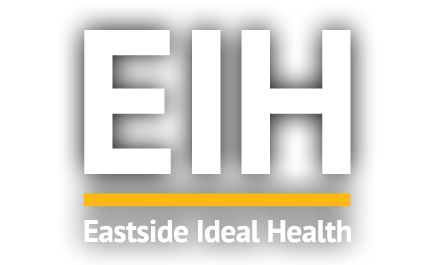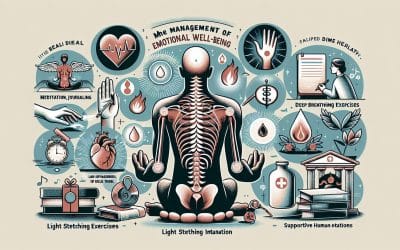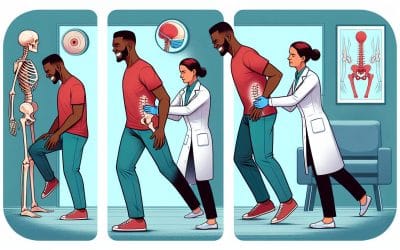Experience relief from hip pain. Learn about the importance of regular check-ups for hip pain patients at Eastside Ideal Health. Enhance your well-being today
Lasting Relief, Natural Healing
Back and Hip Pain Treatment in Redmond, WA
Experience Real Relief that Lasts
Locations in Redmond & Issaquah
Personalized, Non-Invasive Approach
Persistent back or hip pain can make even the simplest tasks difficult. At Eastside Ideal Health in Redmond, our experienced chiropractors take a whole-body approach to diagnosing and treating the root causes of your pain—not just the symptoms.
Common Causes of Back and Hip Pain
Many people are surprised to learn how interconnected the spine, pelvis, and hips are. Some of the most common underlying causes of back and hip pain include:
- Sciatica – irritation or compression of the sciatic nerve
- Hip Flexor Tightness – often due to prolonged sitting or poor posture
- SI Joint Dysfunction – sacroiliac joint inflammation or instability
- Disc Herniations – especially in the lower lumbar spine
- Arthritis or Bursitis – degenerative or inflammatory joint conditions
How We Diagnose the Source of Your Pain
Our diagnostic process includes:
- A thorough health history and symptom review
- Orthopedic and neurological testing
- Functional movement assessment
- Referral for imaging when needed (X-ray or MRI)
We aim to identify biomechanical dysfunctions contributing to your pain, whether it's a misaligned pelvis, spinal restriction, or muscular imbalance.
Chiropractic Treatments for Back and Hip Pain
At Eastside Ideal Health, your personalized treatment plan may include:
- Chiropractic Adjustments to realign the spine and pelvis
- Soft Tissue Therapy to release tension in hip flexors and glutes
- Corrective Exercises to stabilize core and pelvic muscles
- Mobility Training to restore proper range of motion
- Postural Coaching to prevent recurrence
Our approach goes beyond symptom relief. We focus on long-term improvement through mobility, strength, and balance.
Home Care Strategies
We often recommend at-home stretches and strengthening exercises to support your recovery. A few examples include:
- Kneeling hip flexor stretch
- Glute bridges
- Cat-cow spinal mobility drills
- Pelvic tilts and deep core activation
These exercises help retrain the body and reduce dependence on passive therapies.
When to Seek Chiropractic Care
You should see a chiropractor if you experience:
- Shooting pain from your lower back into your leg (sciatica)
- Stiffness or reduced mobility in your hips
- Pain that worsens with sitting, bending, or walking
- Discomfort that persists beyond 1–2 weeks with self-care
Early intervention can often prevent the progression of pain and reduce your risk of needing more invasive treatments.
Why Choose Eastside Ideal Health?
We're not your average chiropractic clinic. At Eastside Ideal Health, we combine hands-on treatment with functional rehabilitation to ensure our patients achieve real, lasting change.
- Experienced chiropractors and rehab specialists
- Integrated care with lifestyle and movement coaching
- Personalized, evidence-based plans tailored to your goals
- Convenient Redmond location with early morning and Saturday hours
Real Results, Backed by Science
“Manual therapy and exercise are effective in reducing hip and lumbar spine pain, especially when combined.”
Frequently Asked Questions
- Is chiropractic care safe for hip pain?
- Yes, when performed by a licensed professional. Our providers assess your health history to ensure safety and effectiveness.
- How many sessions will I need?
- Most patients begin to feel better within 4–6 sessions, but the number varies depending on severity and underlying cause.
- Will I need imaging?
- Not always. We refer for imaging if red flags are present or if progress stalls despite treatment.
Get Started Today
If you're tired of living with back or hip pain, it's time to take the next step. Book a consultation with our Redmond chiropractic team and start your journey toward lasting relief.
Related Services:
“
Testimonials
Non-Surgical Relief for Back and Hip Pain
Chiropractic care offers a drug-free, non-invasive approach to managing pain and restoring mobility—no surgery required.
Personalized Treatment Plans
Every patient receives a plan designed around their specific condition and goals, helping them recover faster and move with confidence.
Proven Techniques That Target the Root Cause
Chiropractors use hands-on adjustments, soft tissue work, and functional rehab to correct imbalances and prevent future pain.
Learn More About Back & Hip Pain Treatment
Back & Hip Pain Treatment Resources
How to Improve Range of Motion with Back Pain
Discover effective ways to alleviate back pain and enhance your range of motion. Eastside Ideal Health is here to guide you towards a pain-free lifestyle.
How to Manage Emotional Well-Being with Back Pain
Discover effective strategies to handle emotional well-being along with back pain. Find valuable insights, trusted guidance, and relief at Eastside Ideal Health.
The Benefits of Chiropractic Care for Hip and Lumbar Pain
Discover the advantages of chiropractic care in relieving hip and lumbar pain at Eastside Ideal Health. Improve your well-being naturally with our tailored treatments.
The Benefits of Chiropractic Care for Radiculopathy
Discover the advantages of chiropractic care for radiculopathy at Eastside Ideal Health. Improve your well-being with effective treatments from our experts.
The Benefits of Chiropractic Care for Hip and Disc Bulges
Discover the incredible benefits of chiropractic care for hip and disc bulges at Eastside Ideal Health. Relief and wellness are just a visit away! Higher wellbeing awaits.
Contact Us For An Appointment
Get Relief
Clinic Hours
Monday-Friday: 730am - 6pm
Saturday: 9am - 12pm
Sunday: Closed






